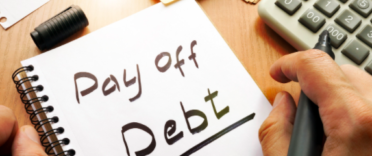 Nobody wants to pay more tax than they need to, but the problem is that the tax system is incredibly complicated. In this guide, we tell you 39 ways in which you can slash your tax bill covering everything from income tax, National Insurance, Capital Gains tax, Inheritance tax, Council tax and even how to legally avoid paying for a TV licence.
Nobody wants to pay more tax than they need to, but the problem is that the tax system is incredibly complicated. In this guide, we tell you 39 ways in which you can slash your tax bill covering everything from income tax, National Insurance, Capital Gains tax, Inheritance tax, Council tax and even how to legally avoid paying for a TV licence.
If you enjoy this guide and wish to identify areas of your finances that could potentially be improved, then you may want to try our free Money MOT tool. Our free Money MOT is a simple tool that, in just two minutes, will give you a detailed breakdown of how your finances shape up. By answering just a few questions (no registration or paperwork required) you will receive a Money MOT grade (from A to E) along with a detailed breakdown of the areas of your finances that may need attention (including everything from bills to wills).
Our Money MOT will also tell you how you measure up against the thousands of others who have already completed an MOT. Finally, and perhaps most crucially, you can sign up to receive our free action plan. This plan is delivered via a series of emails (either daily or weekly - you choose) and details the steps you need to take to improve your MOT ratings. The best bit is that the plan is personally tailored to you.
- Use your annual ISA allowance - Each tax year, you can shelter cash and investments within an ISA to minimise your income tax and capital gains tax (CGT) bills. The current ISA limit for the 2024/25 tax year is £20,000 and you can choose between a number of different types of ISA including a cash ISA, a Stocks & Shares ISA, an innovative finance ISA, a Lifetime ISA, or you can invest in a mixture of all of them. You don’t pay any tax on the interest, dividends, or profits from investments held within an ISA. The rules changed slightly for the 2024/25 tax year meaning you can now invest in more than one of each ISA type. Check out our article 'Can I invest in more than one ISA' for more information. As a reminder, ISAs are not exempt from inheritance tax (IHT).
- Check your personal savings allowance (and the lesser-known ‘starting savings rate allowance’) - Each year, you can earn up to £1,000 in interest on your savings without having to pay tax on it. The allowance is reduced to £500 for higher rate taxpayers and is reduced to zero for those earners that are in the highest tax bracket (known as the 'additional rate'). The starting savings rate allowance was introduced in April 2015 and is designed to ensure that low earners pay less tax on their savings. Depending on your earnings, the starting savings rate allows you to earn up to £5,000 per year in interest without paying any tax, plus you then get the personal savings allowance added on top (£1,000 for basic rate taxpayers and £500 for higher rate taxpayers). For more information, see our article "What is the personal savings allowance and how you can boost it by £5,000".
- Put savings in a non tax-paying spouse's name - If your spouse is a non income tax-payer and you are an income tax-payer, it makes sense to hold any money on deposit in a bank account in his/her sole name. Obviously, once the savings are in their name, they have sole control of the money - so make sure you don't fall out.
- Check your tax code - If you receive an income via PAYE (pay as you earn), be it earned or from a pension, then check your tax code. Your PAYE code determines how much tax you pay. It is down to you to make sure that you are on the correct code, otherwise you could be paying too much tax. Recent research suggested that as many as 1 in 3 people could be on the wrong tax code. The real problems start to arise if you have more than one job. If you do, then read our article "Two jobs? Avoid this tax trap".
- Make sure your spouse uses his/her ISA allowance otherwise he/she will lose it - There's nothing to stop you moving cash into his/her name so that they can fund it, sheltering more of your money from the tax man.
- Equalise income between you and your spouse - If your spouse pays lower or indeed no income tax, move income-producing assets (not just bank accounts – as mentioned above) into their name. The income will then form part of their tax assessment which could reduce your overall household tax bill. It will ensure that your spouse’s personal annual tax free allowance is used and any tax due is charged at a lower rate.
- Consider joining employer share schemes – These schemes will reduce your taxable income, in exchange for shares under the scheme rules, and you will only be liable to CGT when you decide to sell the shares.
- If you continue to work after the state retirement age, make sure you stop paying National Insurance.
- Consider generating capital gains rather than income – Particularly when looking at your investments. Currently, the CGT rate is just 18% (for basic and non taxpayers) and 24% (for higher rate taxpayers) compared to the equivalent income tax rates of up to 20% and up to 45%, respectively.
- If you are self-employed make sure you claim tax relief on the cost of running any car used for business purposes - For more information, read the government advice in "Simplified expenses if you're self-employed".
- Use your dividend allowance - If you are a shareholder in a limited company, then make sure you use your dividend allowance. The dividend allowance currently allows you to earn up to £500 free of tax.
- Employ your spouse - Employing family members, such as a wife, is a simple way for business owners to save tax, in particular those business owners whose spouse has no other sources of income in their own right. However, you can’t just pretend that your spouse works for you, they must contribute to the business and the level of salary you pay must be commercially justifiable. As long as you can tick those boxes, plus you pay your spouse above the minimum wage, you can deduct their pay as an allowable expense from your business profits and they pay minimal tax on their income.
- Marriage allowance - Marriage allowance lets you transfer up to £1,260 of your personal allowance to your spouse if they earn more than you, which could reduce your tax bill by up to £252.
- Claim expenses - If you are self-employed, make sure you are claiming all your tax-deductible expenses.
- Make pension contributions – These can reduce your tax bill while at the same time helping you save for your retirement. Pension contributions receive tax relief at your highest marginal income tax rate subject to an annual limit of the lower of 100% of your earnings or £60,000.
- Make pension contributions on behalf of your spouse and children via stakeholder pension – You can invest up to £3,600 a year into stakeholder pensions for each of them, even if your spouse and children do not earn anything. Since basic rate tax relief is available, each contribution of £3,600 will cost a high earner only £2,880.
- Consider tax incentivised investments such as Enterprise Investment Schemes (EIS’s) and Venture Capital Trusts (VCT’s) - These offer generous tax breaks upon investment but are very high risk. Other investments you may consider are zero-dividend preference shares as they do not provide dividend income but instead roll up to an eventual capital gain, hopefully. But a word of warning, never make an investment for tax reasons alone.
- Use your annual Capital Gains Tax (CGT) allowance - The really good news is that everyone gets an annual CGT allowance each tax year, currently £3,000 (for the 2024/25 tax year). This means that you can make capital gains of £3,000 without having to pay tax at all. For investors this is very attractive, again, particularly for high rate income tax.
- Transfer assets to your spouse (husband, wife, or civil partner) and use their CGT allowance - Transfers between spouses are not taxed, and you both get an annual CGT allowance. This means you can transfer enough of your assets to your husband or wife for him or her to sell to use up their own allowance. This effectively doubles the CGT allowance for married couples.
- Bed-and-spousing - In the old days you could sell shares on which you’d made a gain to use up some of your CGT allowance, and then the very next day you’d buy back shares in the same company. This was called bed-and-breakfasting, but it is no longer possible. Under current legislation you can’t buy back the same shares you sold within 30 days if you want to crystalise a capital gain. However, your spouse can buy shares in the company you sold. So what you can do is you sell an investment to realise the capital gain – taking into account your annual allowance, of course – and then your partner repurchases the same assets in their own trading account. This way you keep the assets in the family, essentially keeping your investment portfolio intact, but you’ve defused the gain. Bed and ISAing is the same idea as bed-and-spousing, but this time you rebuy within an ISA. Purchasing back the same assets in an ISA doesn’t violate the 30-day rule.
- Remember to carry forward any past capital losses - If you make an overall capital loss in a tax year, you should note it on your Self Assessment tax return. Importantly, capital losses which you have declared can be carried forward up to four years after they were incurred and used to reduce your capital gains in future tax years. So reducing your potential CGT bill. If a capital loss was made before 5th April 1996, the four-year rule doesn't apply, and the loss can be carried forward indefinitely, but more recent losses have to be offset first.
- Sell your second home tax-free like an MP - When you sell your main home, you typically do not have to pay CGT under what is known as Private Residence Relief. What the MPs did was use the rules to their advantage to apply it to their second homes. It is not illegal and you can do it. The final 9 months of your ownership of a property always qualify for CGT relief, regardless of how the property was used during that time (e.g. renting or residential). As long as the dwelling has been your only or main residence at some point in the past you qualify for tax relief. In our article, 10 best ways to avoid inheritance tax I explain how to slash your IHT bill.
- Make a will - If you die without making a will, you will be deemed to have died ‘intestate’ and your estate is distributed in accordance with the law of the land, which is unlikely to be how you would have wished. There are a number of other reasons to make a will such as it may be possible to reduce the amount of tax payable on the inheritance (IHT) if advice is taken in advance and a will is made.
- Get married - Any assets passed between spouses (including those under civil partnerships) are free from IHT. The other benefit of getting married is that IHT is not payable when an estate passes between a husband and wife, or from one civil partner to another. Even better, married couples or civil partners can transfer any unused element of their IHT-free allowance to their spouse when they die. That means that a married couple’s assets can reach £650,000 before any IHT is payable.
- Make use of the main residence nil-rate band - The main residence nil-rate band is a property allowance that allows you to leave your home to your family tax-free. The allowance was introduced in 2017, starting initially at £100,000 and has increased by £25,000 each year. It now stands at £175,000, where it will stay until 2026. This means that a married couple or those in a civil partnership are able to pass on a total estate of £1 million free of inheritance tax.
- Pass on unwanted inheritance - It is possible to divert on an unwanted inheritance to someone else by applying for a deed of variation', which will mean the gift can go to another nominated person and not ever form part of the original beneficiary estate. The variation has to happen within two years of the original donor’s death for it to be valid. But speak to your financial adviser and solicitor first.
- Make use of your annual IHT exemption - You can give away gifts worth up to £3,000 in each tax year and these gifts will be exempt from IHT when you die. You can carry forward any unused part of the £3,000 exemption to the following year, but if you don’t use it in that year, the carried-over exemption expires. This annual exemption is in addition to the other gift exemptions.
- Gift money when an intended beneficiary is getting married - Some gifts made during your lifetime are exempt from Inheritance Tax because of the type of gift or the reason for making it. Wedding gifts are exempt, subject to certain limits.
- Make small gifts - You can make small gifts up to the value of £250 to as many people as you like in any one tax year. However, you can’t give a larger sum and claim an exemption for the first £250. You can’t use your small gifts allowance together with any other exemption when giving to the same person.
- Give to political parties or charities – No IHT is payable on gifts to charities and political parties. This includes museums, community amateur sports clubs and universities.
- Gift money out of regular income - You can gift away as much as you wish from your regular income as long as your standard of living is maintained. But beware as ‘income’ does not include that from investment bonds.
- Simply give away your assets - Directly giving away your assets is known as a potentially-exempt transfer (PET). These gifts will not be included in your estate, and so will be free of IHT, as long as you live for 7 years from the date of making the gift.
- Consider investments that attract IHT relief - Certain investments attract preferential IHT treatment, such as AIM-listed stocks, forestry and woodlands. But seek advice as they are not for the faint-hearted, especially AIM stocks which are very volatile investments.
- Take out insurance – It is unlikely that you will mitigate an entire IHT liability, in which case a simple solution is to take out life insurance.
- Do you need to pay for a TV licence? - A colour TV licence currently costs £169.50 a year and is required if you intend to watch or record TV programmes while they are being broadcast live (on any channel). The rules apply even if you don’t own a TV, but watch shows live on any other device, such as a PC, tablet or phone. You will also need a licence if you watch any BBC programmes, whether or not you watch the programmes live (as you now need a licence to access BBC programmes, even just on catch up). If however, you do not watch any live TV and only access your programmes via streaming or downloading services then you do not require a TV licence. Remember though that you need to ensure you do not access any BBC services, either live or on-demand. This includes all sports that are broadcast through the BBC website such as the Olympics, Football and Tennis. Think carefully about your viewing before committing to not paying a TV licence as you may be liable for a large fine if caught. If you're absolutely sure you no longer need a TV licence you can formally let TV Licensing know. There is no legal obligation to do so, but it may stop letters arriving at your door. You can then fill out the TV licensing’s contact form, letting them know you no longer watch TV. You’ll also need to cancel your direct debit with your bank.
- Check you are in the right valuation band – Your Council Tax bill is based on the value of your property. But when we say 'value' it is the value that your local council have assessed your property to be worth. When Council Tax was introduced in the early 90's properties were placed in 'valuation bands' which were established from nothing more than fleeting external glances of properties. Many properties have never been revalued subsequently. So you might not only be in the wrong valuation band and paying too much tax but you could even be paying more than your neighbours. Fortunately, it is possible to challenge your band and potentially save thousands of pounds if you think your band is wrong. But be warned, get your assessment wrong and you could equally be in too low a band in which case an appeal might get your band revalued upwards, as well as those of your neighbours.
- Get a council tax discount – Certain groups of people (such as those listed below) don't pay Council Tax. So if you live with anyone falling into any of these groups you can claim a discount as the full Council Tax bill is based on at least two adults (who are not part of any exempt groups) living at your address. If only one adult lives in your home, ignoring those exempt people, your Council Tax bill can be reduced by 25%. Exempt people include:
- children under 18
- people on apprentice-schemes
- 18 and 19 year olds who are in full time education
- full time college and university students. For houses that contain full time students only, the bill will be reduced by 100 per cent.
- young people under 25 who receive funding from the Skills Funding Agency or Young People’s Learning Agency\nstudent nurses\nforeign language assistants registered with the British Council
- people who have a severe mental disability, live-in carers who look after someone who isn't their partner, spouse or child (up to 18 years)
- diplomats
See our article 'What to do if you are struggling to pay your council tax'
- Apply for a Council Tax Reduction – People on low income or receiving benefits may be able to apply for a Council Tax Reduction.
- Seek advice from a financial adviser and a tax specialist – If you are contemplating mitigating tax, you should seek expert advice as not all the ideas in this guide are suitable for everyone (they are for information purposes only). Also, remember that the tax regime is always subject to change so bear this in mind before you start making wholesale changes to your finances. Read our article 'Do you need financial advice?' for more information.
Don't forget to try out Damien's Money MOT, our free and simple tool that in just two minutes will give you a detailed breakdown of how your finances shape up.






Just occured to me re: passing money to children/grandchildren tax-free. At the moment you can give 3K
to each child/per annum free of IHT, plus inummerable gifts of £250. What about utilising the “Rent a room” allowance, where you can rent a room out for £80/week, and don’t need to declare it. So, assuming
any grown-up children/grandchildren are now buying their own house, you could rent a room from them
and give a tidy £4,160 a year. According to my maths each child will now receive a total of £7,160 per annum, and each grandchild the £4,160. The point is – just because you rent a room, it doesn’t automatically mean you have to occupy it, nudge, nudge.
Your idea is highly problematic for several reasons:
It’s likely tax evasion: The “Rent a Room” scheme is intended for genuine rental situations, not fabricated ones to avoid inheritance tax.
It could be considered a sham: HMRC could easily challenge this arrangement and view it as an attempt to artificially reduce your estate’s value.
Penalties are severe: If caught, you could face substantial fines and even criminal charges.
There are also some misunderstandings about the gift allowances:
£3,000 annual exemption: You can give away £3,000 each tax year free of inheritance tax. This is a total limit, not per child. You can carry forward any unused allowance from the previous tax year.
£250 gifts: You can make multiple gifts of up to £250 per person as you like in a tax year, free of inheritance tax. However, you can’t give someone a £3,000 gift and also give them a £250 gift in the same tax year.